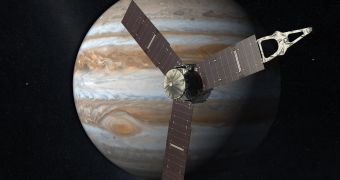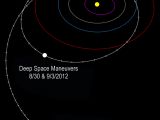A NASA spacecraft headed for Jupiter is buzzing Earth tomorrow on its way to the giant planet. This isn't because it got lost and went the wrong way; as most deep space crafts, the probe is using Earth's gravity to accelerate it to the speed needed to reach Jupiter.
Gravity assists are quite common for crafts headed to the outer planets. The technique may seem counterintuitive, but some exploration couldn't be done without it.
Juno was launched two years ago and went on an elliptical orbit around the sun before coming back to Earth for the gravity slingshot.
The craft will approach Earth tomorrow and will swoop down to just 560 kilometers (350 miles) above the planet before being shot away into space again. This procedure will add some 26,280 km/h (16,330 mph) to the craft's speed.
At this point, Juno has traveled more than 10 AU of the total 19 AU its trip to Jupiter will take. But without the detour around the sun and the gravity assist from Earth, the craft would have never been able to pick up the speed needed to reach Jupiter.
The spacecraft should be visible with binoculars or a small telescope in some parts of the Southern Hemisphere, South Africa, India, and so on, as it flies by Earth. It will be faintly visible in the rest of the world as it departs.
Juno will study Jupiter's composition with a variety of instruments. The mission aims to better understand the makeup of the biggest planet in our solar system, its weather system, and possibly its origins.
The craft will arrive near Jupiter in August 2016 and place itself in to a highly elliptical orbit. It will make 33 orbits around the planet before being decommissioned and crashed into Jupiter in October 2017.
Juno is the first deep space probe to use solar panels to power itself; all other previous missions relied on nuclear reactors. Considering that NASA is rapidly running out of the plutonium used by these nuclear batteries and has no way of replenishing its supply, alternative energy sources must be found. The sun shines a lot less brightly on Jupiter, compared to Earth or Mars, so solar panels are not an ideal option since they have to be quite large.

 14 DAY TRIAL //
14 DAY TRIAL // 
